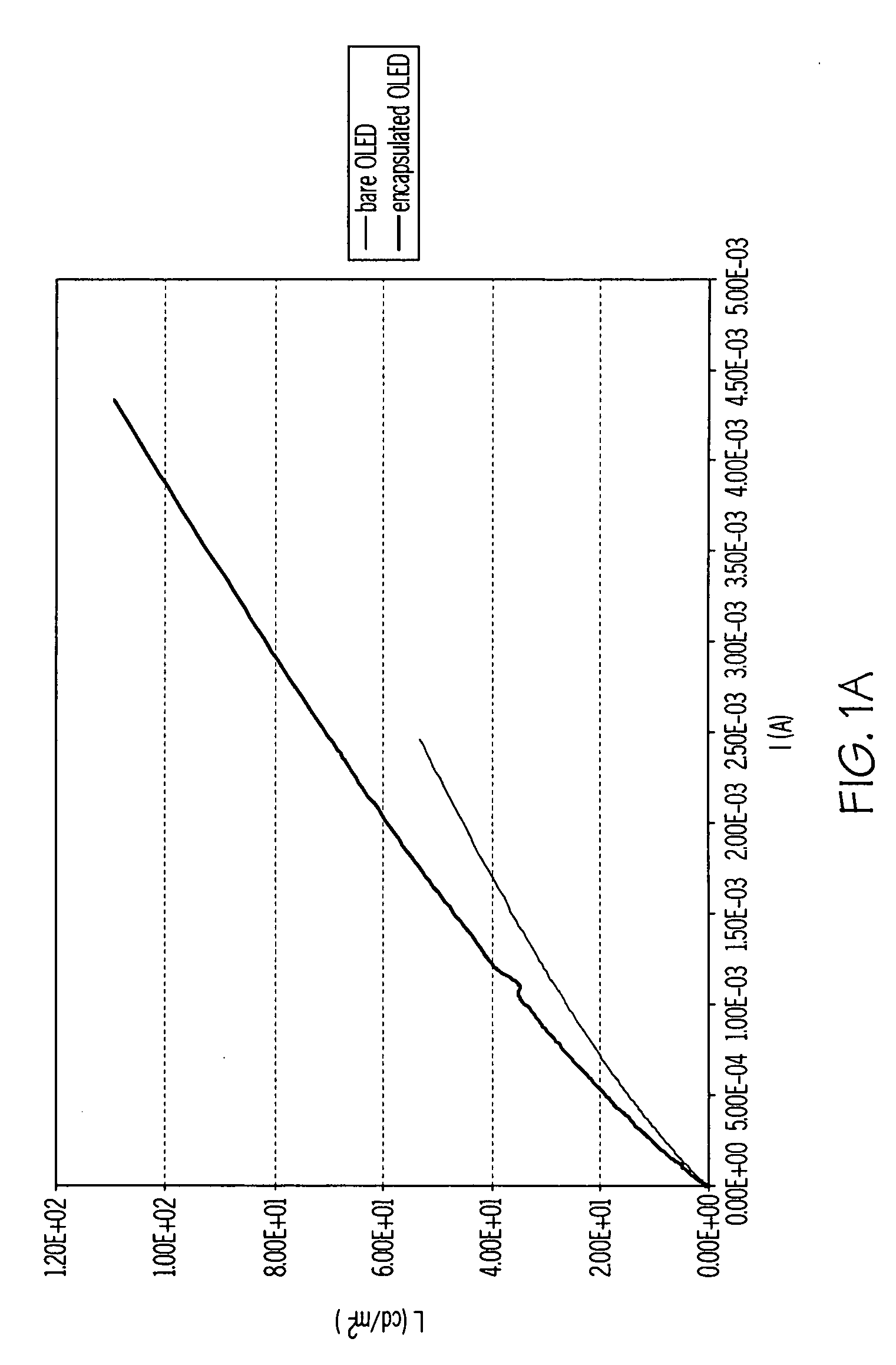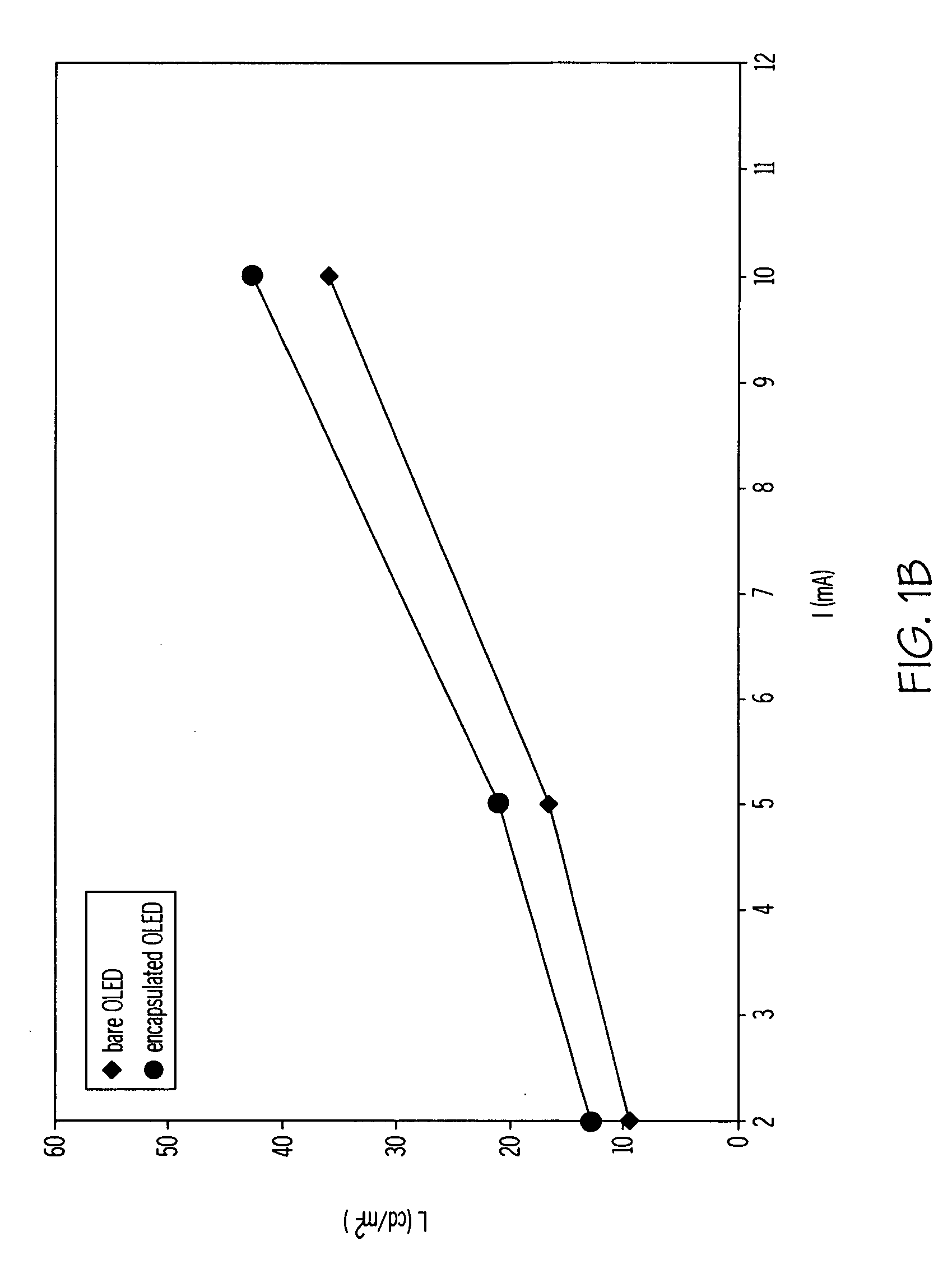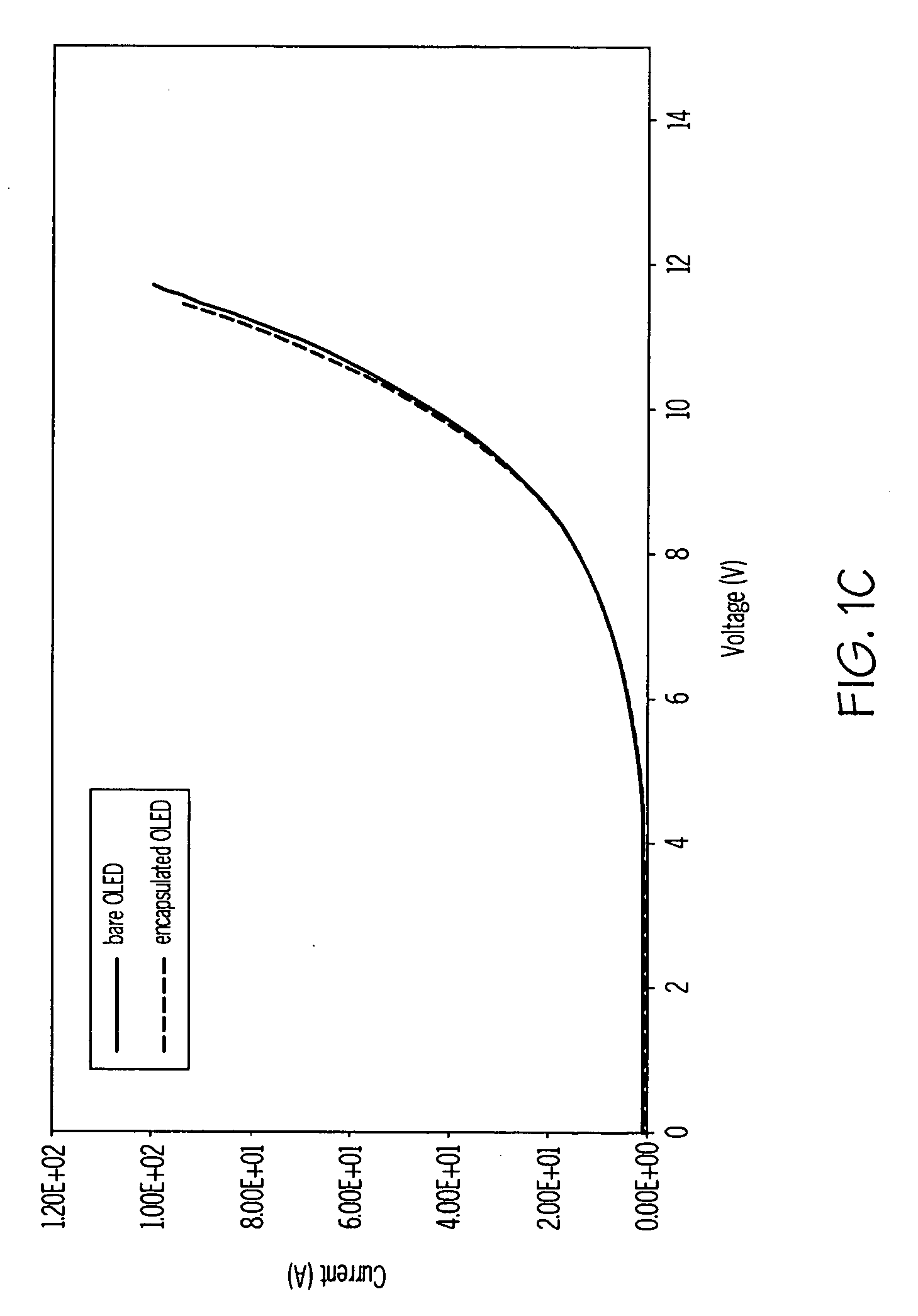Encapsulated RGB oleds having enhanced optical output
a technology of encapsulated rgb and optical output, which is applied in the direction of discharge tube/lamp details, discharge tube luminescnet screens, organic semiconductor devices, etc., can solve the problems of not necessarily achieving optimized light output, and affecting the efficiency of rgb applications
- Summary
- Abstract
- Description
- Claims
- Application Information
AI Technical Summary
Benefits of technology
Problems solved by technology
Method used
Image
Examples
example 1
[0063]FIG. 1A compares the experimentally observed light emission of a bare OLED and of the same OLED after coating with an integrated barrier and optical enhancement stack. The integrated barrier and optical enhancement stack included a 50 nm LiF plasma protective layer (RI-1.395), a 100 nm aluminum oxide barrier layer (RI-1.65), and 4 barrier stacks of 0.5 μm acrylate polymer (RI-1.5) and 35 nm aluminum oxide (RI-1.65). The graph shows the experimental I-L curves for the OLEDs. The I-L curve for an OLED is obtained by measuring the light emitted by the OLED device as a function of the current used for driving the device itself. The light was measured in the forward direction. FIG. 1A shows an enhancement of 25% for the encapsulated OLED.
[0064]FIG. 1B compares the experimentally observed light emission of a second bare OLED and the same OLED after encapsulation. The integrated barrier and optical enhancement stack included a 50 nm LiF plasma protective layer (RI-1.395), a 100 nm al...
example 2
[0066]The effect of inorganic plasma protective layers and inorganic barrier layers between the OLED and the barrier stack were evaluated using the simulation. The OLED has a 250 nm thick ITO cathode. Three barrier stacks are included, each having a 1 μm polymeric decoupling layer and a 40 nm inorganic oxide barrier layer with a 1 μm polymeric decoupling layer on top of the barrier stacks. The light output of a bare OLED with a 250 nm ITO cathode was compared with encapsulated OLEDs having an inorganic plasma protective layer and different thicknesses of initial inorganic barrier layers (50 nm LiF / 120 nm aluminum oxide; 120 nm aluminum oxide; 50 nm LiF / 40 nm aluminum oxide), as shown in FIG. 2. The encapsulated OLED with the LiF inorganic plasma protective layer and 120 nm initial inorganic oxide barrier layer provided improved light output. The optimization was in terms of peak intensity, color purity, and color coordinates. The model shows that the introduction of the plasma prote...
example 3
[0067]Example 3 shows experimental results of the effect of introducing a plasma protective layer.
[0068]FIG. 3 compares the effect of different protective layers having the same thickness. The graphs report experimental I-L curves. The emitted light was measured in the forward direction. The two OLEDs had the identical structure and had been deposited on the same motherglass (in the same run). The two protective layers, PL1 and PL2, had the same thickness, 50 nm. The RI of PL1 was 1.4, and the RI of PL2 was 1.8. FIG. 3A shows an enhancement of 35% for the PPL with an RI of 1.4, while FIG. 3B shows an enhancement of 14% for a PPL with the RI of 1.8.
PUM
 Login to View More
Login to View More Abstract
Description
Claims
Application Information
 Login to View More
Login to View More - R&D
- Intellectual Property
- Life Sciences
- Materials
- Tech Scout
- Unparalleled Data Quality
- Higher Quality Content
- 60% Fewer Hallucinations
Browse by: Latest US Patents, China's latest patents, Technical Efficacy Thesaurus, Application Domain, Technology Topic, Popular Technical Reports.
© 2025 PatSnap. All rights reserved.Legal|Privacy policy|Modern Slavery Act Transparency Statement|Sitemap|About US| Contact US: help@patsnap.com



